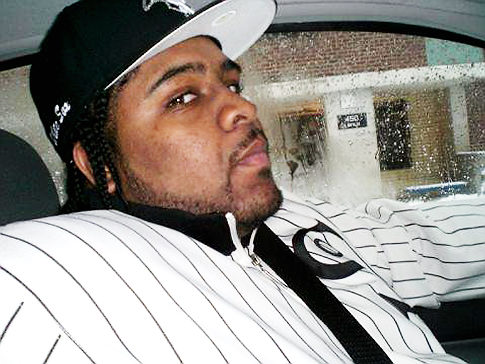The tangle of New York’s “serious injury” threshold in auto cases came before the state’s highest court yesterday, and the pending decision could hopefully abate the flood of summary judgment motion practice that is has inspired. Three cases were on the calendar, all trying to wrestle with ambiguous language created by the Legislature decades ago that sets forth who may bring a lawsuit for injuries after a car accident. The issue before the Court, was how it should (if at all) address those ambiguities. Because one thing everyone can agree on is this: Vague statutes result in excessive litigation.
A quick primer on the issue, for those visiting for the first time. New York’s No-Fault statute was created in the 1970s, and citizens traded off the right to bring lawsuits for smaller injuries in exchange for some guaranteed medical and lost wage benefits for those with “serious injuries.”
The problem with the statute is the difficulty defining “serious injury.” Back when the law was created, an x-ray was state of the art imaging. The statute defined serious injury as follows (and you can immediately see the problems inherent in several of the definitions, which I’ve placed in italics):
- A personal injury that results in death;
- Dismemberment;
- A significant disfigurement;
- A fracture;
- The loss of a fetus;
- Permanent loss of use of a body organ, member, function or system;
- Permanent consequential limitation of use of a body organ or member;
- Significant limitation of use of a body function or system; or
- A medically determined injury or impairment of a non- permanent nature which prevents the injured person from performing substantially all of the material acts which constitute such person’s usual and customary daily activities for not less than ninety days during the one hundred eighty days immediately following the occurrence of the injury or impairment”.
You don’t have to be a genius here to see the problems, for example, in trying to determine what is a “significant limitation” or “consequential limitation.” If you have difficulty figuring out what the difference is, you are not alone. One Justice wrote about those opaque words:
“The enabling legislation for the No-Fault Law itself provides little or no guidance to the bench and bar as to the scope of the terms used”
Under this definition, a simple fracture of the toe qualifies as serious injury. Why? Because back in the 70s you could see it on an x-ray. Could you see a torn meniscus in the knee? No, because the MRI had not yet been invented. Thus, more serious injuries, such as the torn meniscus in this example, are sometimes thrown out of court as failing to meet the serious injury threshold.
In order to deal with the legislative vagueness, courts started to invent rules. And out of the maelstrom of repeated litigation courts started to demand that an injured claimant have “contemporaneous”, “objective” and “quantifiable” evidence of injury. But you will not find those words in the statute or the legislative history.
So what does that mean in real life? That if injured car accident victims goes to litigation-savvy doctors right after an accident, they may get well-written reports that document with precision the range of motion losses they might be suffering from, and fully document any past problems in order to contrast it with the injuries from the accident. Some doctors, if they are law-savvy, will quantify the impairments, writing for instance, that the patient has 45 degrees range of motion in a body movement when 120 degrees is normal.
Of course, most doctors don’t write that way. They have no need to write in their records what “normal” is, since they already know it. And many will simply write that the range of motion is restricted, impaired, or use similar language. Left unsaid is that, for many injured people, it is actually impossible to quantify the loss right after an accident because the mere act of testing is too painful.
But woe unto the victim that simply goes to his family doctor because he is in pain, and the doctor places barely intelligible chicken-scratch into his notes. At this juncture, neither patient or doctor may know that that pain in the knee or or back is something far more serious. Good quality tests may not come for a very long time. Now what?
According to developing jurisprudence, a litigant may lose his right to proceed in a suit, not based upon his injuries, but because his doctor isn’t up on the law. Even though factual disputes exist between doctors — with a treating physician saying one thing and a hired defense doctor the opposite — judges are taking cases away from juries and throwing them out on summary judgment, substituting judicially manufactured rules for factual determinations.
We have judges demanding that certain things be written in contemporaneous medical reports, leaving the profoundly disturbing issue of judges telling doctors how to practice medicine. I’ve dealt with this subject before (see: New York’s No-Fault Mess (Do Our Judges Want Doctors To Go To Law School?)) Back then I wrote:
The physicians will have to write the way the judges like, not the way they learned to write in medical school. You may think they are the same, but they are not. If a patient has a range of motion of 90 degrees for a particular movement, a doctor might note that. But if the docs don’t also write what the normal range of motion is (and there would be no need for them to do this on their own, since they already know what normal is) the court might toss it out. That 90 degrees may speak volumes to the doctor but mean nothing to the court. Of course, if the doctor doesn’t quantify it, and merely says “poor” or “limited” the patient is also out of luck, since it must be “quantified.” And if the doctor merely has chicken scratch writing for his notes, then the victim is really in a pickle.
Never mind that many doctors don’t write like this in their notes, the court wants it anyway. So you might have the best doctor in the world, and you might even have gone to the office “contemporaneous to the time of the accident,” but if the doctor doesn’t write reports in the exacting manner that the courts’ want, well too damned bad. The court will simply take the case away from the jury and dump it.
And of course there is the requirement that the testing be objective, which raises three issues. First that the injury is capable of quantitative testing, second that the doctor did it, and third that s/he recorded it (and did so in the exact manner the courts likes). So it isn’t really about the injury, it’s now all about the doctor and the doctor’s knowledge of the law.
Justice, my friends, is not so blind after all. Those in the poorer precincts of the state — who may be going to doctors with lesser medical educations, or who might simply be too lazy (or too busy) to keep good records, or not be knowledgeable about how judges want them to keep records in case a suit is brought — may be deeply out of luck. Is this what the courts want? Is that what the Legislature intended?
Which brings us back to yesterday’s arguments up on Eagle Street in Albany. The judges pressed on in the three cases regarding the problems inherent to make sense out of what the Legislature wrought 30+ years ago.
I don’t know if the Court will bring clarity to the problem or not, since the legislative language is so poorly drafted. One portion — that being the part about being unable to do substantially all of your usual activities for 90 out of 180 days — actually encourages people to stay home from work. It also discrimimates against the elderly, the unemployed, the stay-at-home mom, and the self-employed who try to get things done where those that punch the clock might not. And what does “substantially” mean? If I have a 1% shoulder impairment it is one thing. But if it happens to Nolan Ryan, as Judge Piggott noted in oral argument, it is something else.
There are two things the court should do with these cases:
1. If there is a factual dispute, let the jury resolve it as with every other type of factual dispute. Stop letting the lower courts invent rules that the legislature never agreed to. If Doctor 1 says his patient’s injury was serious, and Doctor 2 says it wasn’t, let it be hashed out in the courtroom under the ancient crucible of cross-examination. Let the jury decide what is significant or consequential. It is their job to apply the facts to the law, not the courts. The Legislature created this mess, and if it needs fixing (and it does) then let the Legislature do it.
2. Ask the Legislature — make that beg the Lesgislature — to update this law and bring clarity to the definition of serious injury. We can see things on those CTs and MRIs that couldn’t be seen in the 70s. The torn meinsicus. The ligament damage. The herniated disk. Someone going in for knee or shoulder surgery should not be tossed out of court on summary judgment when the fractured pinky remains.
[Addendum: At TortsProf, Chris Robinette picked up on this post, as he and other academics prepare to present a paper in Malaysia on the subject. New York is not the only one with problems. So, for those interested in exactly how to change it, there is legislation pending that would bring clarity and fairness to the law: (See: New York’s No-Fault Law To Finally Be Updated?) This legislation would account for advances in medical diagnostic technology. Injuries would include:
- a partial or complete tear or impingement of a nerve, tendon, ligament, muscle or cartilage;
- injury to any part of the spinal column that results in injury to an intervertebral disc;
- impingement of the spinal cord,spinal canal, nerve, tendon or muscle;
- surgery
There is more on the proposed legislation, and a New York Law Journal article on the subject, here: New York’s No-Fault Law and How Victims Lose Their Day in Court [end addendum]
Back in December 2008 Justice Paul Victor, sitting in the Bronx, cried out for reform of the issue in a scathing opinion: Frustrated Bronx Trial Judge Takes Aim at Appellate Court, Legislature And Attorneys Over No-Fault Law’s Serious Injury Standard. I hope the Court of Appeals will heed that call, and similarly cry out to the Legislature to untangle this unholy mess.
———————–
For those wanting the details of the underlying decisions argued yesterday, these are the cases and the official summary from the Court of Appeals: PERL v MEHER; ADLER v BAYER; TRAVIS v BATCHI:
The plaintiffs in these cases were injured in three separate motor vehicle accidents and sued for damages under Insurance Law § 5102(d), the No-Fault Law. They claim, among other things, that they raised questions of fact regarding whether they suffered a “serious injury” under the statute based on “permanent consequential limitation of use of a body organ or member.” They offered expert medical evidence that was derived, in part, from range of motion tests conducted by their doctors shortly after their accidents.
The Appellate Division — the Second Department in Perl and Adler, the First Department in Travis — ruled the plaintiffs failed to meet their burden of proof because their treating physicians offered qualitative assessments of their condition and did not numerically quantify the results of their range of motion tests. In Perl, the Second Department said, “It is well established that in threshold serious injury cases, restrictions in range of motion typically are numerically quantified…, compared to the norms…, and based upon identified objective tests….” It said the affirmation of the plaintiff’s doctor “failed to identify the range of motion tests utilized by him, the numerical results of those tests, or the norms against which results are measured. The affirmation, therefore, failed to meet the requirements set forth in this court’s sound and well-established precedents.”
The plaintiffs argue that a physician’s objectively verifiable, though qualitative, assessment of a patient’s limited range of motion is sufficient to raise a question of fact regarding whether they suffered a serious injury. They cite Toure v Avis Rent A Car Sys. (98 NY2d 345 [2002]), which said, “In order to prove the extent or degree of physical limitation, an expert’s designation of a numeric percentage of a plaintiff’s loss of range of motion can be used to substantiate a claim of serious injury…. An expert’s qualitative assessment of a plaintiff’s condition also may suffice, provided that the evaluation has an objective basis and compares the plaintiff’s limitations to the normal function, purpose, and use of the affected body organ, member, function or system….”
Updated: 11/22/11: The Court of Appeals took the case and rendered a decision: NY Top Court Reshapes Auto Accident Law (Revamps The Way Courts Determine “Serious Injury”)


